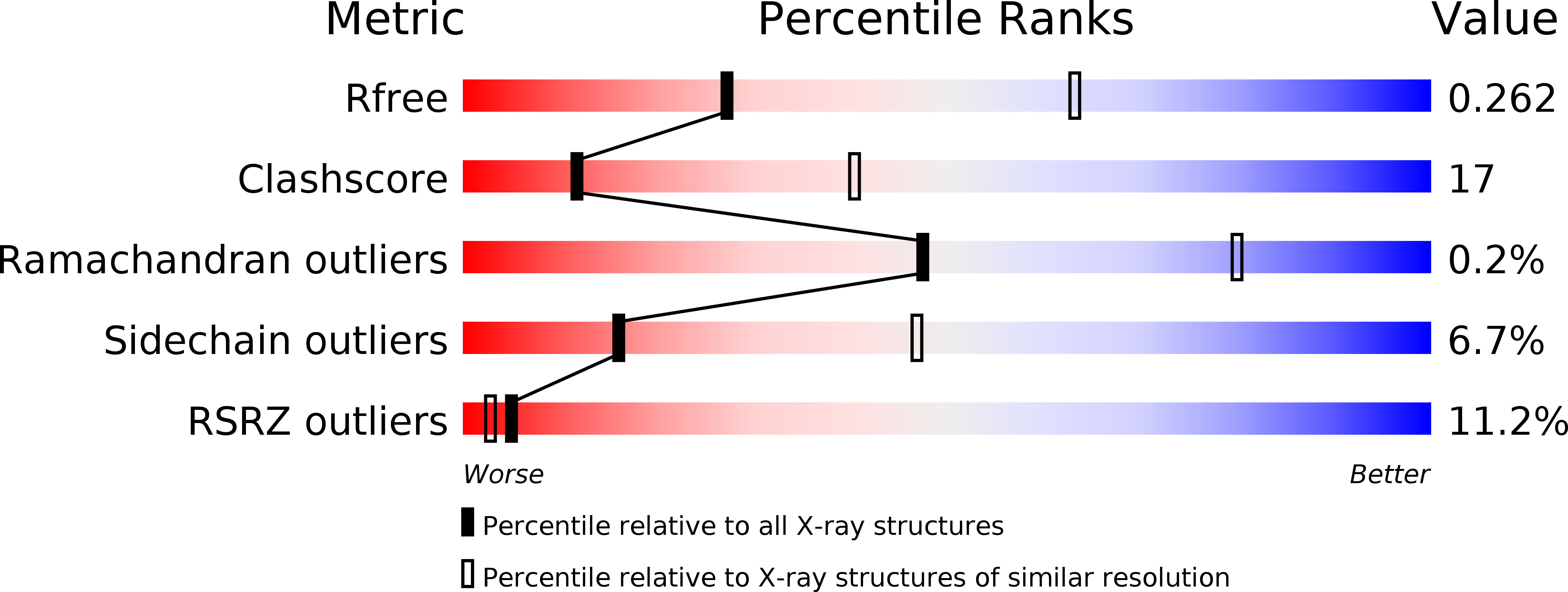
Deposition Date
2013-12-24
Release Date
2014-06-11
Last Version Date
2023-11-08
Entry Detail
PDB ID:
4O6Z
Keywords:
Title:
Crystal structure of serine hydroxymethyltransferase with covalently bound PLP Schiff-base from Plasmodium falciparum
Biological Source:
Source Organism:
Plasmodium falciparum (Taxon ID: 36329)
Host Organism:
Method Details:
Experimental Method:
Resolution:
2.98 Å
R-Value Free:
0.26
R-Value Work:
0.22
R-Value Observed:
0.22
Space Group:
P 61


